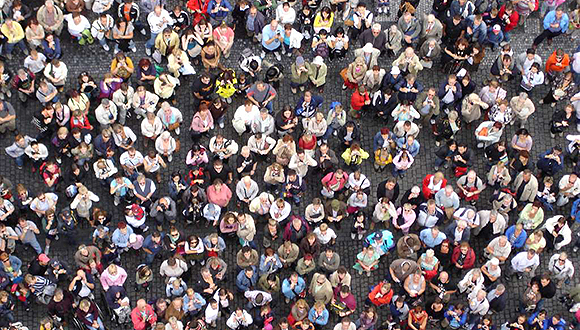Humans are causing mass movements of bacteria around the world
In an article in the journal Science, Josep Peñuelas warns that we must immediately begin studying the changes we are causing in the microbial world, improve water treatment systems, and change crop fertilization practices.

Similar to rats, foxes, tigers and pandas, some microbes are gaining ground and colonizing new areas as a result of the human footprint, while others are impacted negatively and are facing extinction as a result. Of course, since we are talking about microscopic organisms, these changes are invisible to the human eye. Is there really anything to worry about?
An international team of scientists from Australia, China, France, England, and Spain has published a study in the journal Science warning that this phenomenon may be altering the global functioning of ecosystems. "We have to be aware that these microorganisms are at the heart of many basic natural cycles such as those of nitrogen and carbon, just to name a couple," says Josep Peñuelas, study author and researcher of the Spanish Research Council (CSIC by its Spanish abbreviation) based at CREAF. “These changes are being ignored because these microscopic organisms silently lend their services to the planet, but this could result very costly," says Michael Gilling, researcher from Macquaire University.
The research team makes a call to action to immediately put this issue on the scientific agenda. On one hand, it is urgent to monitor and model the changes that humans are provoking within the microbial world. On the other, it is crucial to make improvements in sewage treatment systems and fertilizer use; such changes can help reduce the spread of microbes and genes of increased resistance to antibiotics.
Microbes travel in manure, human excrement, ballast water, and agricultural soils
Today, 95% of the the world's feces come from people and domesticated farm animals. Our excrements travel around the world as a consequence of billions of tourists who spread microbes and their antibiotic-resistant genes.
Also, more than 80% of the world’s crops are fertilized with wastewater or animal excrement slurries which are treated minimally or not at all. Microorganisms within these waste streams end up contaminating animals, fruits and vegetables. Wastewater also contains products with biological effects (metals, antibiotics, and disinfectants) which push the motors of mutations and the selection of resistant microorganisms which then become rapidly extended across the planet.
Humans also favor the dispersal of marine microbial cells though ballast water held in merchant ships. It has been estimated that each year 100 million tons of ballast water is deposited in ports in the United States. "It is well known that this water has transported invasive algal species as well as others, but we don't understand the invisible changes that this transport of microorganisms across the oceans is provoking," adds Peñuelas.
Finally, human activities are now responsible more moving more soil, sand, and rock than all natural forces combined. Natural river erosion moves around 21 gigatons of soil per year, much lower than the 75 gigatons per year eroded by agriculture. This erosion naturally transports equally huge amounts of microorganisms that live in the soil.
Referenced article:
Zhu, Yong-Guan Zhu; Gillings, Michael; Simonet, Pascal; Stekel, Dov; Banwart, Steve; Penuelas, Josep. Microbial mass movements. Science. September 2017.







